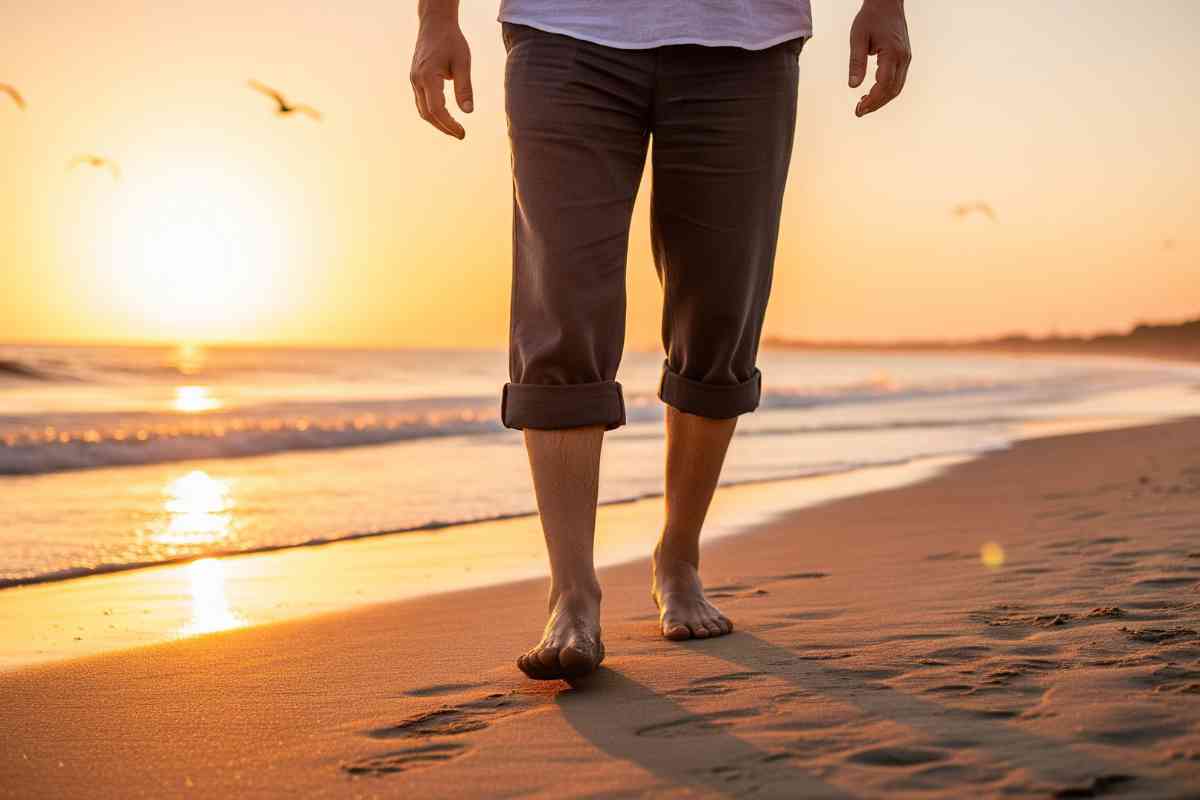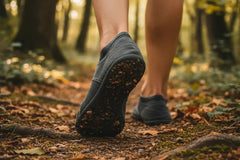Top Ways to Keep Your Feet Safe When Living Barefoot

Living barefoot sounds freeing, until sharp objects, hot pavement, or infections turn that freedom into pain.
Every step becomes a risk, and small injuries can lead to big problems if ignored. But don’t worry, there are smart, simple ways to protect your feet without giving up the barefoot lifestyle. Discover the top tips to keep your soles safe and strong.
Key Takeaways
Start slowly to build strength and avoid injury when going barefoot.
Choose safe, clean surfaces and inspect your feet daily.
Keep feet clean and moisturized to prevent infections and cracking.
Carry minimalist shoes for protection in risky environments.
Walking barefoot can improve brain function, focus, and reduce stress.

What is Barefoot living?
Barefoot living involves going without shoes to allow direct contact between the feet and natural surfaces.
Advocates believe it promotes better posture, strengthens foot muscles, and enhances sensory feedback.
Once common in early human history, it has regained interest for its potential benefits in improving balance, reducing joint pain, and fostering a deeper connection with the environment.
Top 10 Ways to Keep Your Feet Safe When Living Barefoot
Start Slow and Build Foot Strength
Going barefoot too fast can cause injury. Start with short walks on soft ground and add foot exercises like toe stretches and towel scrunches.
This strengthens your arches and ankles. Go slow, be consistent, and let your feet adjust over time.

Choose Safe Surfaces
Stick to safe surfaces like grass, sand, smooth floors, or dirt trails. Check for sharp objects, heat, or moisture.
If it’s too hot for your hand, it’s too hot for your feet. Be careful in cities, find clean parks or quiet sidewalks.
Inspect Your Feet Daily
Look at your feet every day for cuts, swelling, or signs of infection. Check between your toes.
Catching problems early helps prevent worse issues. Make this a quick habit after washing your feet.
Keep Feet Clean
Wash your feet daily with soap and water. Clean between your toes and dry completely. Rinse after walking outside. For tough dirt, use a brush or short soak. Clean feet lower your risk of infection and odor.
Use Natural Moisturizers
Apply natural oils like coconut or olive oil to prevent dry, cracked skin. Aloe vera helps heal. Moisturize daily after washing to keep your feet flexible and healthy.
Practice Good Hygiene in Public Spaces
Public areas can carry germs. After walking barefoot in public, wash your feet or use a sanitizing spray. Avoid public restrooms barefoot. Use sandals or minimalist shoes for protection.
Learn to Read the Ground
Train your feet to feel different surfaces. Walk slowly and notice texture, heat, or sharpness. Use your eyes to scan ahead. With practice, you’ll sense danger before stepping on it.
Carry Minimalist Footwear
Bring lightweight shoes in case of sharp ground or extreme heat. Choose flexible, foldable ones with thin soles. Keep them with you to use when needed.
Stay Up to Date on Vaccinations
Barefoot walking increases exposure to bacteria in soil or public areas. Keep vaccines like tetanus and hepatitis A/B updated. They protect you from serious infections, especially if you step on sharp objects.
Respect Your Limits
Don’t overdo barefoot walking. Soreness is normal, but pain means stop. Take rest days and listen to your body. Ignoring signs of fatigue can cause injury and delay progress.
Science behind barefoot living and healthy life
Walking barefoot does more than just connect you to the ground, it can actually help your brain work better.
A new 2024 study looked at how barefoot walking affects brain function in teenage boys. After walking barefoot four times a week for 12 weeks, the boys showed big improvements in focus, mental speed, and lower brain stress.
Their brainwaves shifted in a healthy way, helping them stay calm and alert at the same time.
The sneaker group didn’t get the same benefits, and the group that didn’t walk at all actually showed signs of mental decline.
The researchers explained it simply: barefoot walking boosted thinking ability by improving brain activity.
They saw more brainwaves linked to focus and fewer linked to stress. That means this simple habit might help students or anyone who needs better concentration without needing fancy tools or supplements.
It’s not a magic cure, but it’s a natural, free, and safe way to boost brain power, just by kicking off your shoes and taking a walk.





